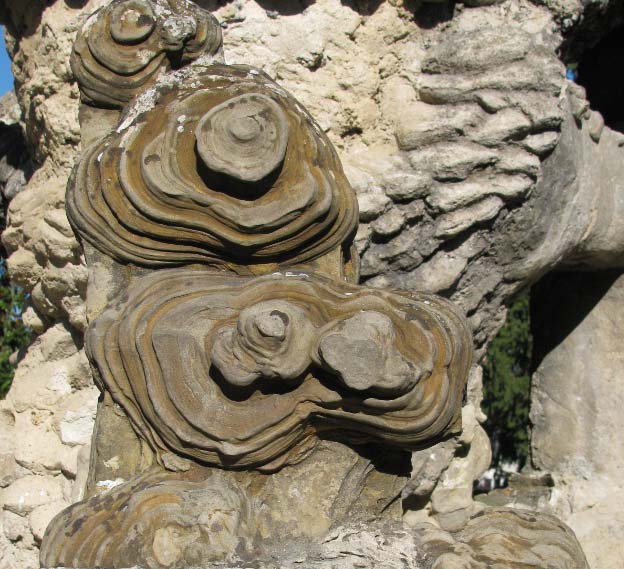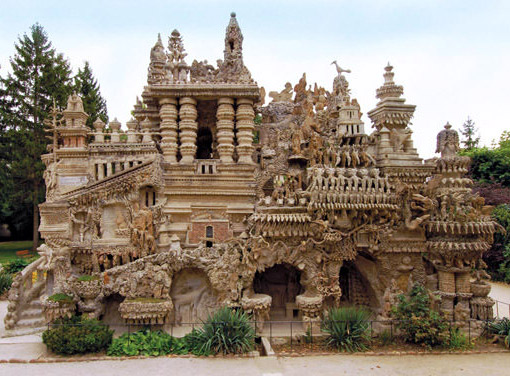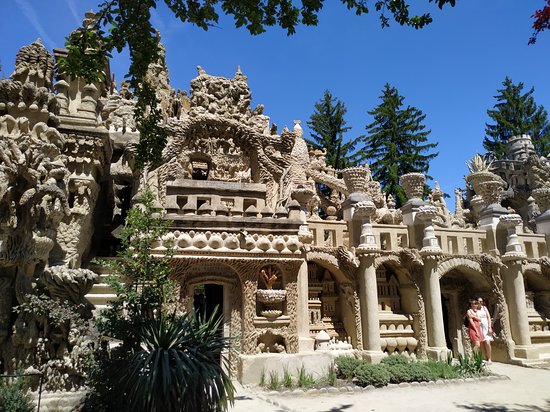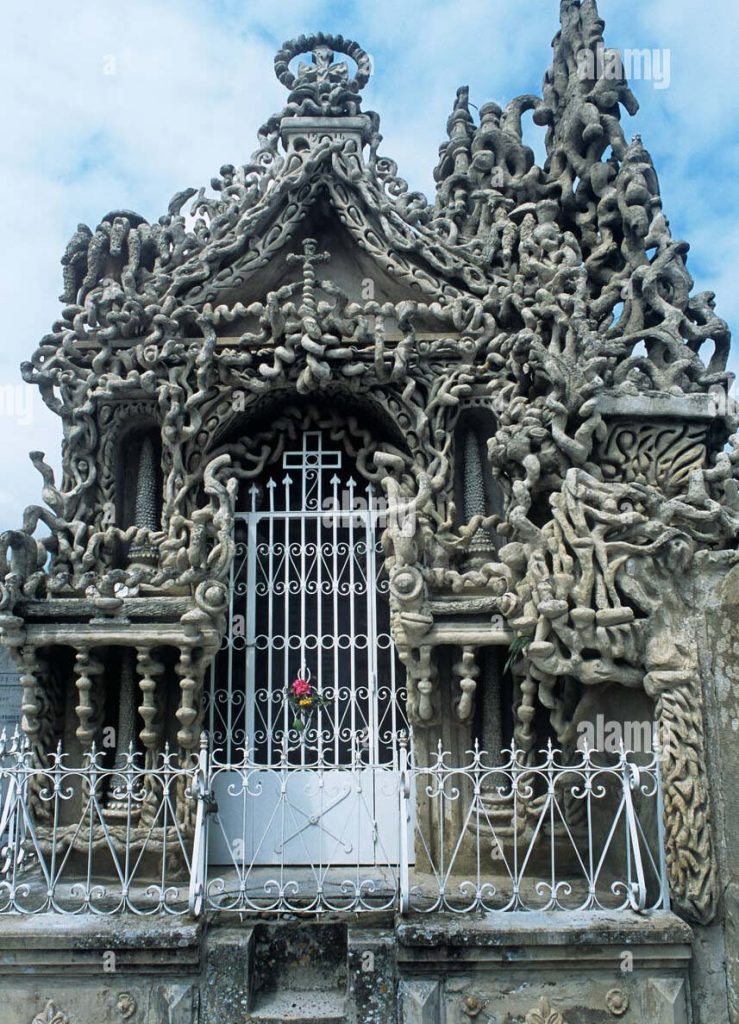
Joseph Ferdinand Cheval was a postman in Hauterives near Lyons who, until 1879, lived an ordinary and wholly unremarkable life in mid-nineteenth century France. The mail in Hauterives had to be carried across a wide area of farflung cottages and farms and, as Cheval trudged his thirty two mile postround, he did what any of us would do; he daydreamed. He imagined his perfect building, his ‘ideal palace’ and planned it out in his head. But it was just a fantasy – after all, how could it be anything more? Cheval had left school at the age of thirteen, with no qualifications, let alone any knowledge of architecture or structural engineering.

One day at the age of 43, not long after the death of his first wife, Cheval tripped and fell flat on his face. Dusting himself down, he realized he’d tripped on a bizarre shaped rock. He was fascinated and inspired by the unusual stone, and began to look for similar pieces of rock in the surrounding area. He started to collect them on his travels, first in a bag, and later in a wheelbarrow. By night, after his postround, he began mixing up mortar by hand and joining the stones together to create a wall…

For the ensuing 33 years, Cheval worked every spare hour on his ‘Palais Ideal’ – an estimated 93,000 hours. The finished building contains temples, balconies and staircases. The fabric of the building is utterly eclectic, encompassing Classical and Southeast Asian elements, festooned with carved decorations inspired by Biblical themes, Hindu sculptures and Egyptian architecture. There isn’t a single man-made brick in the Palace. Every piece of its fabric is made from the stones Cheval picked up on his postround. More impressive still, it was made predominantly at night by the light of an oil lamp.

At first, Cheval was considered a madman by many local residents. With no permission or prior planning, he had launched into a bizarre building project. His style was utterly idiosyncratic and no doubt shocking to Victorian sensibilities.
Cheval defied local feeling, completing his Palace in 1912, at the age of 75 – and asked to be buried there. Permission was denied by the local authorities, so Cheval spent a further eight years obstinately building a mausoleum for himself within the town cemetery. At the age of 83 he completed this project – again unassisted, and again using only found stones. A year later he died, his life’s work complete.

The latter years of his life saw local and national opinion begin to shift gradually, thanks in no small part to Modernism. Artists like Picasso and Ernst visited, acknowledging the strange beauty of the site – which prefigured Surrealism. In 1969 the building was declared a cultural landmark, and the site, now open to the public, attracts more than 100,000 visitors a year. It remains there, a curious testament to what one person can achieve if they’re just stubborn enough to believe, and put the hours in…